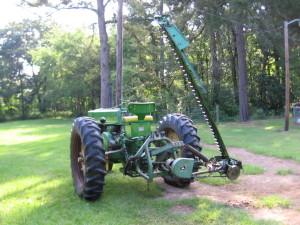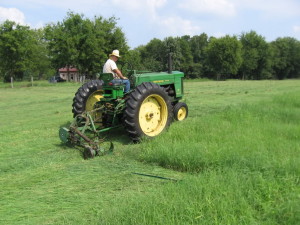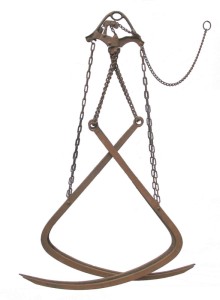(as seen in the Times Plain Dealer, May 25, 2016)
Sullivan Brothers Ties to Elma – Elma man dated five Sullivan brothers’ sister
I always knew of my uncle’s World War II experience, and as I looked through the boxes in my basement once again, I realized the boxes didn’t contain just old family photos, letters and memorabilia, but a story that would very soon be lost to generations and time. As I dug deeper into the details, I saw how my family’s history crossed into another family’s. Memorial Day reminds us all to remember those who’ve served and died. Here is my uncle’s story, told from letters, cards and newspaper clippings, during a turbulent time. I don’t want the story to end in a box in my basement.
My uncle, Russell Murphy, worked in Waterloo, Iowa around the late 1930’s to early 1941. Sometime during this time he met a young lady that worked at the Maid Rite Café. Her name was Genevieve Marie, or Gen Marie as she was called. They dated, and soon Russ met Gen’s five brothers who worked at the Rath Packing Company. Russ worked at John Deere. Eventually Russ was acquainted with the whole family.
Their last name? Sullivan. Yes, this was the family of the five Sullivan brothers who made national front page news when they enlisted together and received permission to be assigned to the same ship in the Navy, after the Pearl Harbor attack killed a close friend. Their story was told in a 1944 movie called The Sullivans, and later was inspiration for part of Stephen Speilberg’s fictional movie, Saving Private Ryan. The brothers would be lost during a battle at sea less than two years later.
Fast forward a couple of years to December 7, 1941, Pearl Harbor Day. By this time Russ has moved to Baltimore, Maryland and is working in the Social Security department. He writes home on the evening of December 7: “Dear Mother, Have been listening to news flashes most of the evening. Sure surprised me to hear of the attack on Pearl Harbor.” A month later, on January 2, Russ replies to his Mother’s letter, responding to the apparent question about the news that the Sullivan brothers were going to enlist together. “Yeah I know the Sullivan family all right, although I didn’t think Al, the guy that’s married, would enlist.” After exchanging some letters with the Navy to assure they would be allowed to serve together, the Sullivan brothers enlist on January 3, 1942.
February 10, 1942, a Tuesday, Russ sends a postcard from Waterloo to his mother in Elma, wondering if his last check from his Baltimore job has arrived yet. By now Russ has returned home from Baltimore, preparing for his own enlistment in the Army. Like many young men, he was hanging out with his friends and they seemed to meet at a familiar place in Waterloo. “Call me at Sullivans, 98 Adams Street. Phone 7838. Lots of the boys are going down on Wednesday. – Russ”, referring to his friends that would be travelling to Des Moines to enlist.
Two days later, Russ enlists in the Army at Fort Des Moines. Over the next couple of years there are many letters that Russ has written home to his family in Elma. Many are from the Rome Air Depot in Rome, New York, where he’s been assigned as a clerk, but he often mentions finding out more about the Cadet exam. Eventually Russ takes the exam, which qualifies him to start training as a pilot. He’s transferred to Georgia and spends several months in the south learning to fly.
That November, the USS Juneau was sunk at the Naval Battle of Guadalcanal and most of the men aboard are killed, including the five brothers of the Sullivan family.
April 1943. Russ has earned his pilot’s wings, and Gen Marie has joined the WAVES, a newly formed women’s branch of the Navy, as a recruiter. She writes from New Orleans to Russ’ mother: “Dear Mrs. Murphy, Received a letter from Russ yesterday, saying he passed exams and now is a pilot.” She goes on to explain about her new assignment to visit war plants and encourage sales of war bonds: “Tomorrow our busy schedule starts (27 plants and shipyards this week.) We’ll be here a week, then go to Mobile, Alabama.”
The next 11 months are documented only by letters home from Russ. He’s doing more flying and training in Georgia, Alabama and Florida. He has finals on navigation and engines. As a proud Air Corp Cadet, Russ explains his uniform. “My uniform is practically the same except that we wear insignias on our shirt collar. U.S. on the right and Air Corps on the left. They look kind of nice. We also wear a crossed wing and propeller badge on our arm instead of the Air Corps insignia I used to wear.”
On March 14, 1944, Russ writes that he’s waiting for a class to instruct. It seems he’s been named a trainer. Two days later, on March 16, 1944, Russ is assigned as a co-pilot for another pilot on a night flight. Shortly after take-off from Moody Field at Valdosta, Georgia, the plane crashes at 9:50 p.m.. Russ and the pilot are killed.
March 19, 1944. Gen Marie writes a letter to Russ’ mother, expressing her sorrow and grief. “This has hit me quite hard. I feel as bad as I did when I lost my five brothers, only in a deeper sense, for Russell meant all my future. Now that I have lost my brothers and Russell, there isn’t any future to look forward to now, so guess all I can do is live for the present. … may I say “mom” and “dad”, for that’s what it would be when this war ended.”
The Navy did not grant Gen leave for the funeral, because “her assignments are made up a month to two months ahead.” My own father, Don Murphy, in the Army and stationed in Hawaii also was not granted a furlough, because of distance and transportation. Gen continues, “…I received a letter from Russell only last week. He wanted me to come to Georgia to see him. I put in for 72 hours liberty to make the trip. My liberty was granted for April 1. …”
It’s unclear how long Russ and Gen Marie dated, or whether some of the correspondence between them was just as friends. There are differences of opinion on the seriousness of the couple. When Gen enlisted into the WAVES, an Associated Press article quotes her: “I had a boyfriend in the army, but we split up,” she said. “I guess I’ll stick to Navy from now on.”
However, one newspaper clipping reporting on Russ’ death says the couple was engaged to be married. A relative insists there wasn’t anything serious.
And, as fate would have it, the Sullivan and Murphy family timelines cross again, a decade later in December 1953. A card from Gen arrives, with the return address of 98 Adams Street, the old family home. Instead of Gen Marie, the return address says it’s from Mrs. Murray Davidson. In the past 9 ½ years Gen has left the Navy and married. The card is again addressed to Russ’s mother. It reads, in part, “I heard the sad news on the TV news just before Xmas. My heart goes out to you again, also my prayers.” For, you see, the Murphy’s youngest son, Leon, had been killed as a crew member in an Air Force airplane crash near Bryan Air Force Base in Texas. He had become a pilot too.




